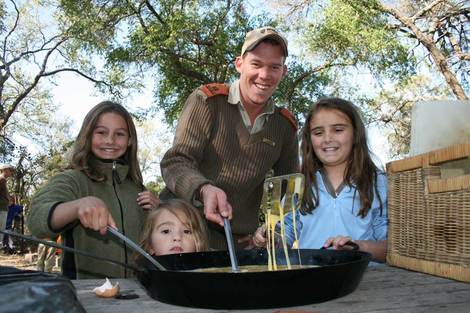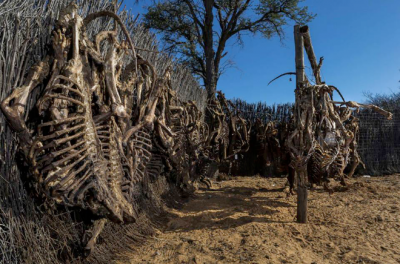Kids in the wild: tips for taking children on safari and our favourite family safari destinations26/9/2017 Animals captivate children. The opportunity to see wildlife up close on safari is not only an extremely rewarding experience but also an educational one. Global travel and viewing animals in the wild is an interdisciplinary learning experience; children learn about biology, conservation, morality, geography, cultural diversity, and develop important life skills like patience and cultural acceptance. A family safari is also an incredible opportunity for families to bond and reconnect away from computer screens and the hubbub of everyday life. Despite these benefits, taking children on a long trip across the world may seem like a daunting prospect. But if you pick an appropriate destination and consider children’s needs and pace, a family safari can be a stress-free magical experience that creates lifelong memories. Although safaris can be great for all ages, we recommend that they are most appropriate for children age six and older as it meets some lodge’s minimum age criteria and this is an age where kids will get the most out of the experience. With two safari-loving children of his own, Beat About the Bush founder and guide Trevor Carnaby, knows exactly how to engage with children on safari. We recommend hiring a private vehicle so your family can decide exactly how long you want to stay at each sighting, how long you are out in the bush for, and to get a more personalised experience. Planning is the key to success. Not all safari destinations cater for children, making it difficult to figure out where to start. The Beat About the Bush staff have the knowledge and experience to tailor a trip that will fit your family’s needs. We can advise you on everything from health considerations to fun activities for kids in Cape Town. While we take care of the planning, all you need to do is watch the Lion King one more time and pack your bags. Here are some of our favourite family friendly safari destinations in South Africa: Greater Kruger The Kruger National Park in northeastern South Africa is arguably the best-known of Africa’s great wildlife sanctuaries. A unique feature of the park is the inclusion (no physical barrier) along the western border of private conservation land into a mega-park called ‘Greater Kruger’.
Kwandwe Private Game Reserve Kwandwe Reserve is situated in the malaria free wilderness to the northeast of Port Elizabeth in South Africa’s Eastern Cape Province and is arguably the region’s finest big game viewing area. Families can take part in a range of Eco-nect activities which are aimed at involving both parents and children with nature. Families are even given the opportunity to plant Spekboom, a type of native vegetation, which makes a positive environmental impact on the area.
Madikwe Game Reserve The malaria free 150 000 acre Madikwe Game Reserve is situated in the North West Province of South Africa. Madikwe offers the Big Five and is considered one of the best places on the continent to see African wild dog – the second most endangered carnivore in Africa.
Tswalu Kalahari Reserve This is South Africa’s largest private game reserve, covering an area of over 220 000 acres and home to a plethora of rare species and stunning landscapes. Children visiting Tswalu can take part in the Tswalu Junior Ranger programme which is carefully designed to meet the enthusiasm of a broad age range. Activities are varied but include archery (beginning with making your own bow and arrows), spoor identification and casting, as well as tracking on foot.
Please feel free to get in touch if you have any queries about taking children on safari or if you would like to chat about planning your family’s safari adventure.
0 Comments
*Warning: this blog post contains images that some readers may find disturbing. Lions represent an essential part of the African landscape. As an apex predator, they help maintain healthy ecosystems by keeping prey numbers in check and removing diseased or weak individuals from prey populations, thus improving the overall health of these species. Lions are also of vital economic importance. As a member of the Big Five and a must-see on most tourists’ wishlists, lions and other iconic species are fundamental to South Africa’s tourism success. The total contribution of travel and tourism to the gross domestic product (GDP) of South Africa was R 402bn (9.3% of GDP) in 2016. The travel and tourism sector accounted for 1.5 million jobs or 9.8% of total employment in 2016. In June 2017, South Africa announced the legalised export of 800 skeletons (with or without skulls) from captive bred lions to Asia a year, sparking controversy from conservationists and safari operators who suggest that this decision may threaten lions and jeopardise the tourism industry. Similar to rhino horn, the demand for lion bones is stimulated by traditional medicinal uses in Asian countries. Unlike many other species in traditional Asian medicine, the use of lion bones is a relatively new trend that only became public knowledge about a decade ago. Powdered tiger bones have been used as ingredients in wine for at least 1000 years. Tiger bone wine and cake is believed to have aphrodisiac qualities and cure malaria, arthritis, other bone ailments and rheumatic conditions. No scientific merit has been associated with these claims. Following a steep decline in wild tiger populations, the species received greater protection measures, including a ban on all trade and stricter law enforcement. This provoked the use of bones from other big cats as viable substitutes, including lions, leopards, snow leopards and clouded leopards, with lion bone being the most popular due to their physiological similarities to tigers and the relative ease in accessing bones from South Africa. South Africa is the largest exporter of lion parts to China, Laos PDR and Viet Nam, with bones originating as by-products of the canned hunting industry. In South Africa, between 6000 and 8000 lions and 280 tigers are kept in captivity. Lions are primarily farmed for canned hunting (animals are bred and raised in captivity to be released into the ‘wild’ a short time before a hunt is planned). Paying hunters often keep the skins and sometimes the skulls as trophies. The bones, previously discarded, have now become a source of commercial income and are legal to trade internationally up to a certain quantity with the correct permits. It is probable that tiger bones and lion bones are passed off as one another depending on the sellers availability at that time. Wild lion numbers have declined by 43% in past two decades to an estimated 20000 lions in Africa today. This decline is largely associated with habitat loss but conservationists and leading tourism operators fear that legalised trade in captive lion bones may stimulate further declines in wild populations and discredit South Africa’s reputation as a photo-safari destination. Limited trade in lion body parts bred in captivity is legal but trade in body parts from wild lions is not permitted. Permitting some trade in animal parts can fuel market demand which may lead to poaching of wild lions and tigers, especially since wild animals are preferred over captive felids in traditional medicine. Examples of illegal poaching for lion bone have already been recorded. In early July 2017 three lions were poisoned with Temic laced baits in Limpopo National Park, Mozambique for the lion bone trade.
For more information about the lion bone trade, we recommend the following reports:
|
AuthorTrevor Carnaby Archives
March 2018
Categories
All
|









 RSS Feed
RSS Feed
